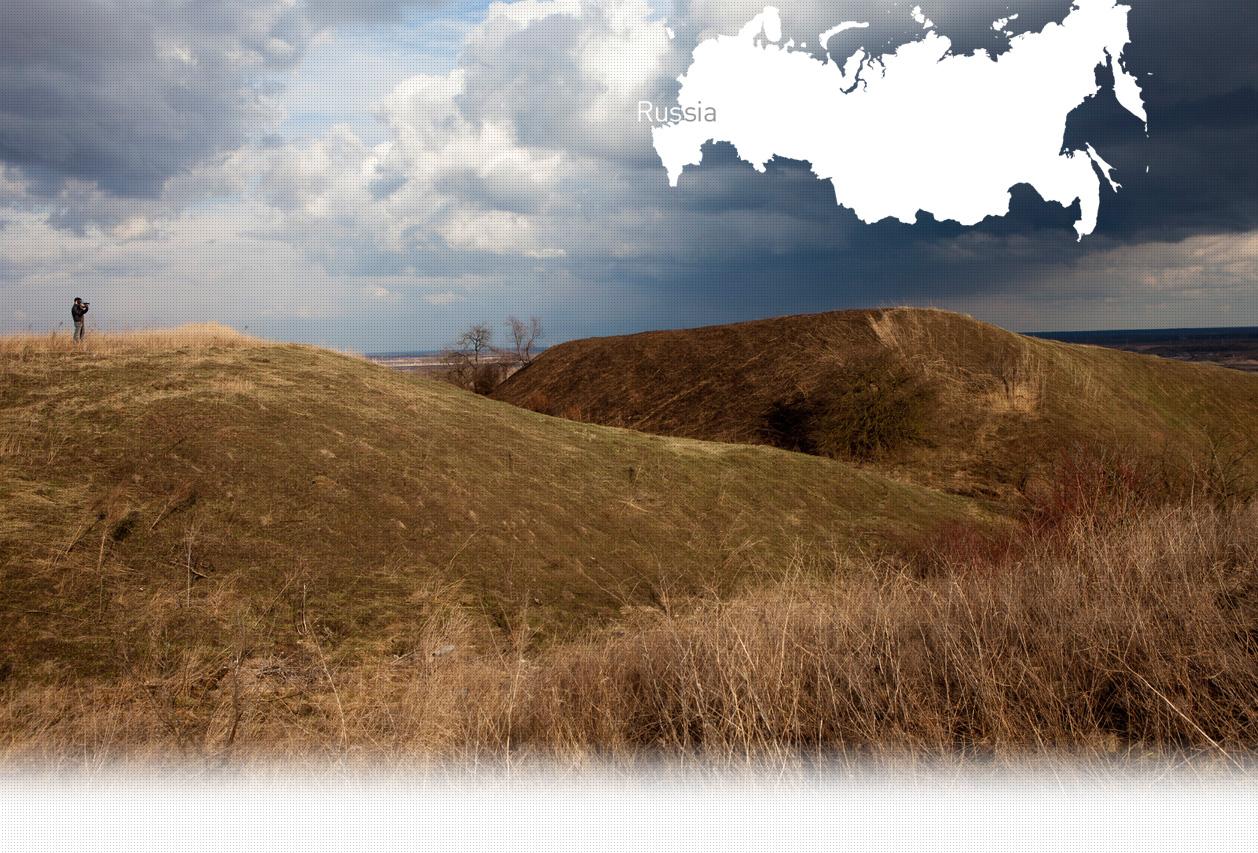

1 Killing site(s)
Vasily R., born in 1928: “My father was made prisoner by the Germans. I went looking for him at the POW camp near the brick factory, but he had actually been sent to Germany. The factory building and its premises were surrounded with barbed wire. The camp was guarded by the Germans. I heard gunfire but it was impossible to see what was happening because of the barbed wire. People said the Jews and Gypsies were shot there and had to dig their own graves.” (Witness YIU/223, interviewed on October 6, 2011 in Salsk)
“We the undersigned drew up the present act in the city of Salsk, on January 26, 1943, saying that during the German occupation of Salsk from July 31, 1942 to January 21, 1943 the following misdeeds were committed by the Germans:
I/ Systematic mass shootings were conducted on the population in the city. The quarry of the brick factory n°1 was the place where these crimes were committed. Every day the fascists brought groups of civilians to the site by car, including up to a hundred people. There they shot them and threw them into a trench. We counted up to thirty of these trenches filled up with bodies of the people shot. Apart from the brick factory’s quarries, we found bodies in four silo trenches at the ‘Veselyi’ kolkhoz.
In total, more than three thousand people were shot. […] The majority of victims were shot without any legal procedure or reason. […] During the occupation, the Jewish and Gypsy populations were entirely exterminated.”
[Act n°20 drawn up by Soviet State Extraordinary Commission (ChGK), on January 26, 1943 – GARF 7021-12-40, pp.3-4]
Salsk is a town in Rostov region, southwest Russia. It is located about 185 km (115mi) southeast of Rostov-on-Don. From a small settlement called Vorontsovo-Nikolaevskoe founded around 1812, the town increasingly grew in size and importance from 1899 on with the opening of a train station, Torgovaya. In 1926, the town was renamed Salsk and made the administrative center of the district. In the years up until to the outbreak of the Second World War, Salsk developed into an important industrial center, with factories and workshops opening regularly. Because it was outside the Pale of Settlement during the time of the Russian empire, no Jewish community settled in Salsk before the Bolshevik revolution. Even then, there were a few Jews in town. As war broke out between Nazi Germany and the Soviet Union in 1941, however, many Jews fled eastwards and sought refuge in Rostov region, including many in Salsk. The refugees mostly came from Ukraine or Leningrad by train. A witness remembers two trains full of refugees were bombed before the Germans arrived, killing all passengers.
The German occupation began in Salsk on July 31, 1942. The first few days following their arrival, the Germans went door to door asking if there were any hidden soldiers. The Germans stayed in houses belonging to the inhabitants and often took food and clothing from them. There was a Kommandant in charge of the town, and local as well as Ukrainian policemen assisted the Germans.
The Germans put up posters in Russian promising a reward to anyone giving them the location of Jews and Communists. A POW camp was set up at the brick factory. Many communists and Soviet soldiers were imprisoned there, but also civilians. The camp was guarded and surrounded by barbed wire, but the prisoners did not stay there long. They were soon shot in the quarry next to the brick factory. There might have been another similar camp on the other side of town where people who were arrested were gathered for a short time before being taken to the brick factory to be shot.
There were many round-ups of Jews and Roma people, and civilians found guilty of aiding Jews or being partisans. Men, women, and children alike were arrested and later shot. Trucks full of people regularly drove through town, taking these people to the brick factory. Sometimes, they were taken by foot and walked in line across town, escorted by armed Germans with dogs and policemen, to the infamous brick factory. There could be more than a hundred people walking in one line to their death. A witness interviewed by Yahad recalled how these people cried and shouted, but never tried to escape as they were well guarded. At the brick factory, the quarry served as the shooting and burial site. It is unclear how many mass graves there were in the quarry and whether or not the Germans dug them themselves or used pre-existing trenches. In any case, victims were lined up next to the pits and shot, their bodies falling right into the grave, or pushed into it if they did not fall. The mass graves were barely covered with a thin layer of earth. Thousands of people were shot there. Some of the bodies were reburied in a proper cemetery after the war, but many remain there. Salsk was liberated by the Red Army on January 21, 1943. In total, about 3,000 people of all ages, Jews, Roma, POWs, and civilians, were killed by the Nazis over six months of occupation.
Do you have additional information regarding a village that you would like to share with Yahad ?
Please contact us at contact@yahadinunum.org
or by calling Yahad – In Unum at +33 (0) 1 53 20 13 17